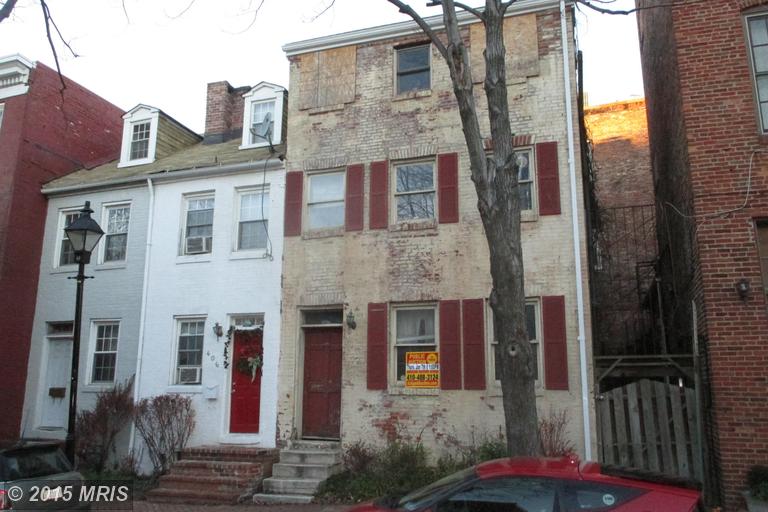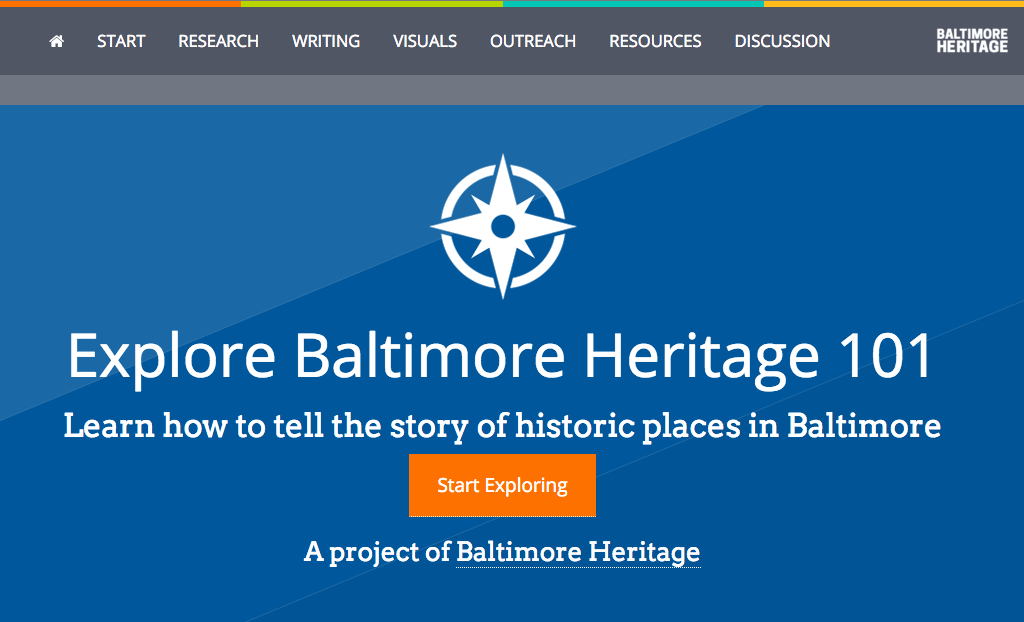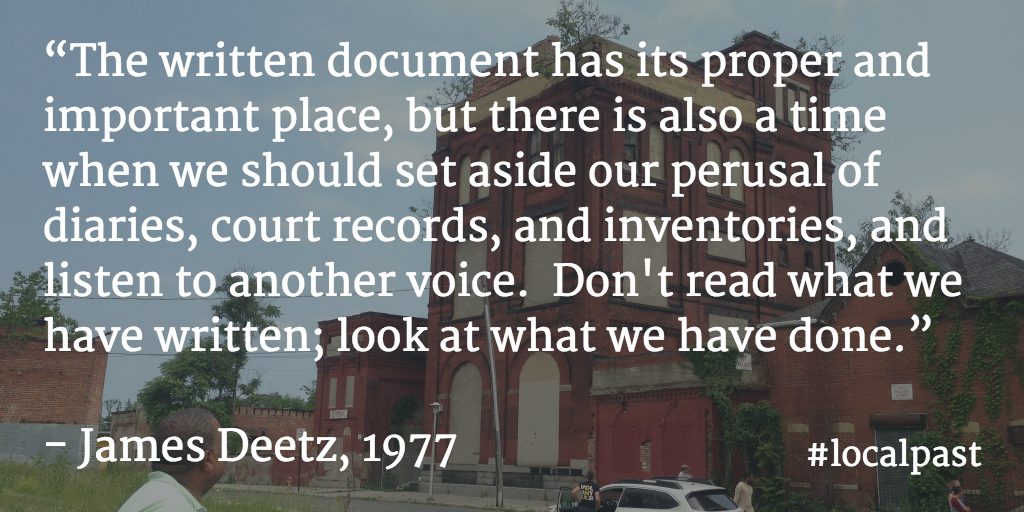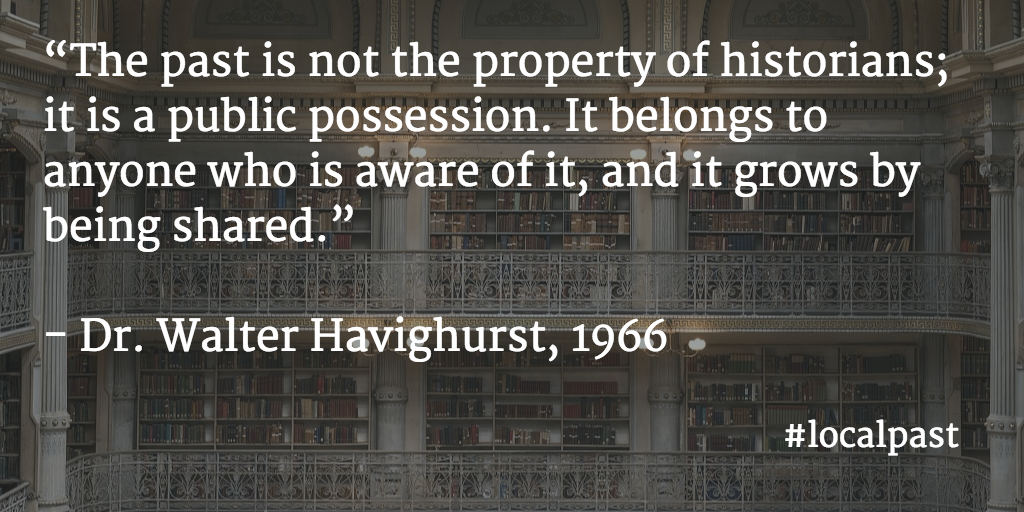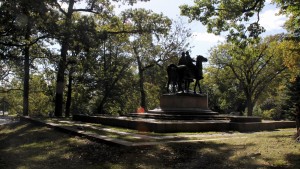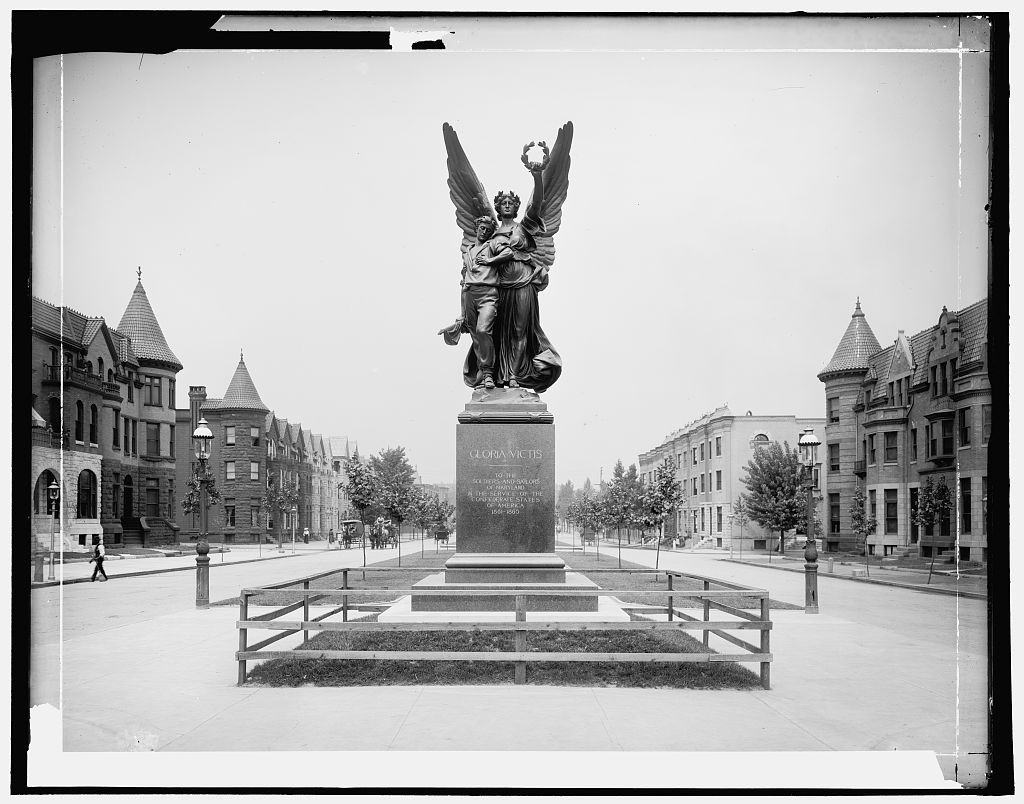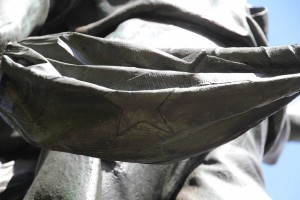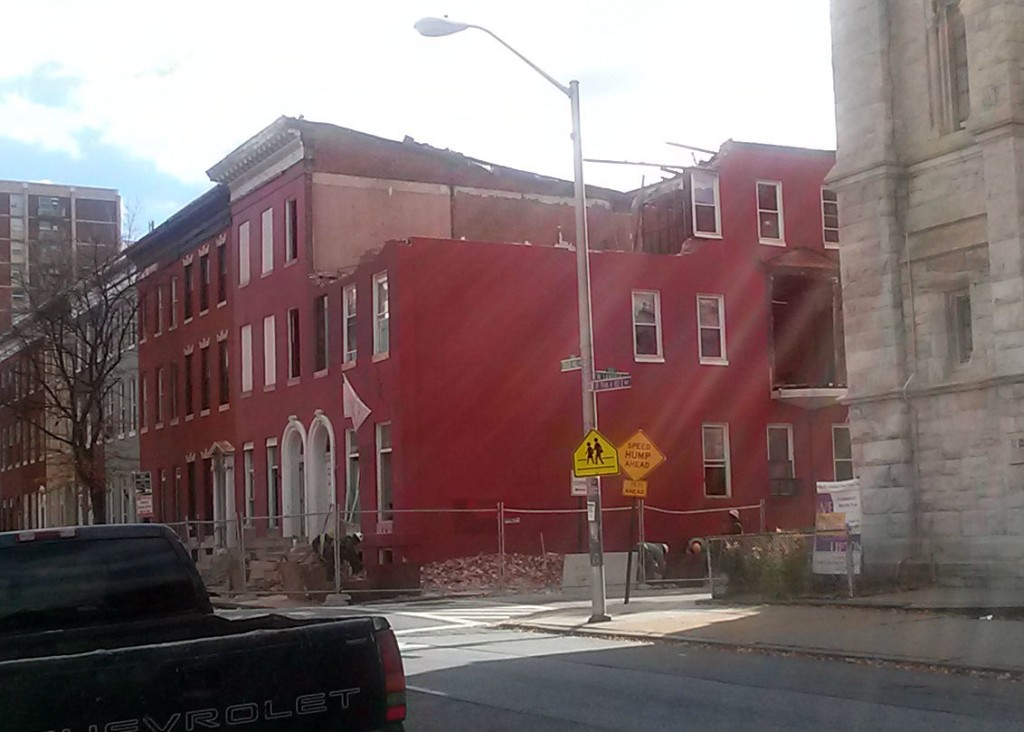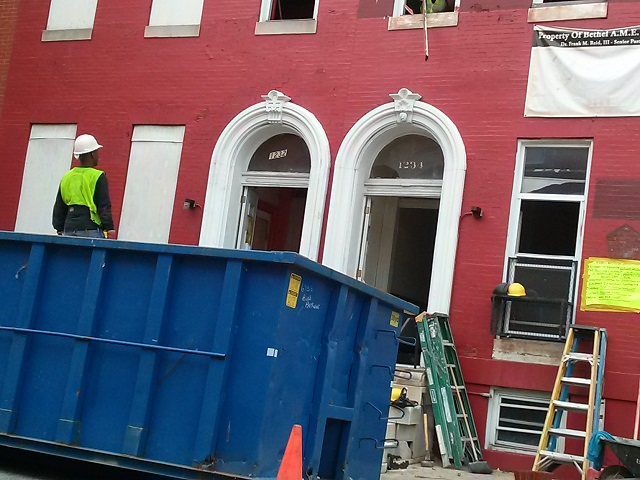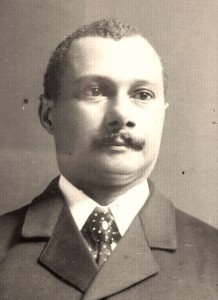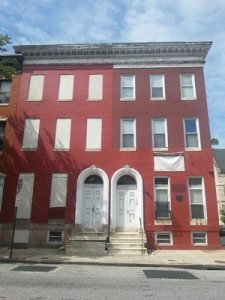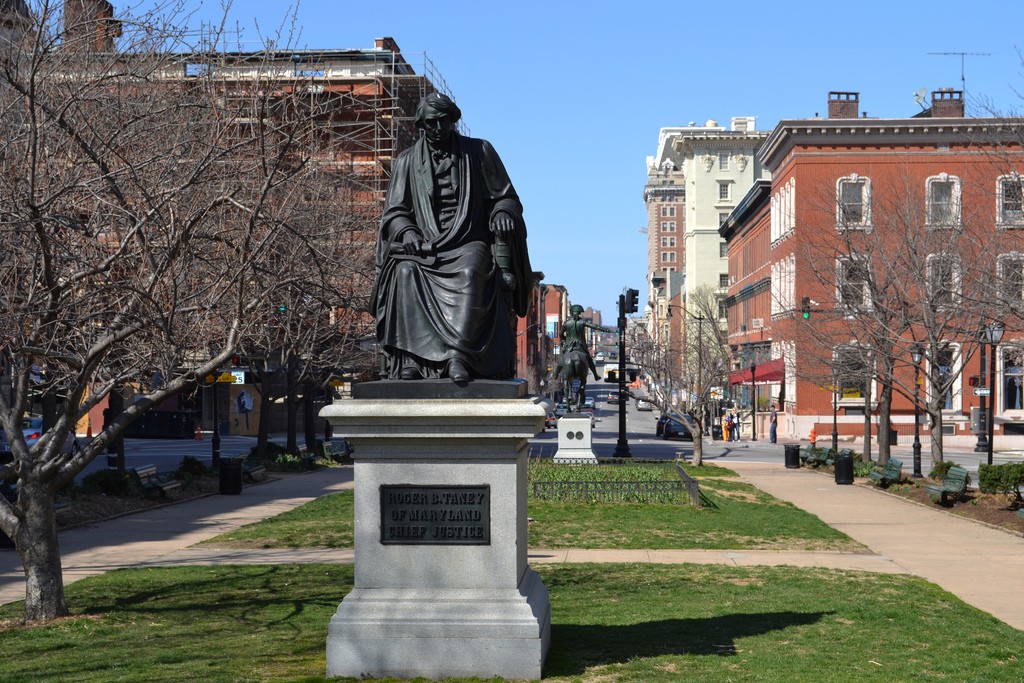Update –January 6, 2015: We just confirmed with Ashland Auction that 404 George Street is now under contract and the auction is cancelled. We plan to share additional information about the new owner and their plans for the building when we learn more. Thank you to everyone who helped spread the word!
Tucked away on a narrow street, 404 George Street has had our attention since concerned neighbors first contacted us in 2012 about this three-story rowhouse in Seton Hill. Next Thursday, January 7, the building is up for auction—offering a unique opportunity to buy a historic house just steps away from the famed Mother Seton House.
In July 2012, local residents pushed Baltimore Housing to file a receivership case against the owner who held the building since 1986. Receivership is a process where a municipality or a qualified non-profit applies for a court to appoint them as the receiver of the property and move to restore the property to use.
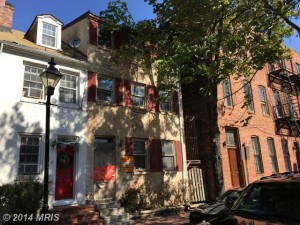
Unfortunately, years of neglect took a toll on the structure. At the first auction in October 2014, the 404 George Street received no bids from interested buyers. Thankfully, Baltimore Housing quickly responded and stabilized the building to make the property more attractive to prospective developers. Stabilizing distressed vacant houses is a key strategy for encouraging private reinvestment and is often more cost-effective than demolition.
On Thursday, January 7 at 1:00 pm, 404 George Street is up for auction again. If you are a local builder, developer or an enthusiastic home rehabber, we invite you to come out next Thursday and invest in this beautiful community. If you are a neighbor, we need you to help spread the word!
Built in the 19th century, 404 George Street is less than a block away from the Mother Seton House and St. Mary’s Seminary Chapel—an 1808 landmark designed by architect Maximilian Godefroy. St. Mary’s Park boasts a recently restored fountain and won recognition from Baltimore City Paper as the city’s best park in 2014. The 2012 master plan for Seton Hill has much more information on the neighborhood. Of course, the property is eligible for city and state historic tax credits—review our historic tax credit guide for more details.
Please help make 2016 the year that the vacant house at 404 George Street turns back into a home.
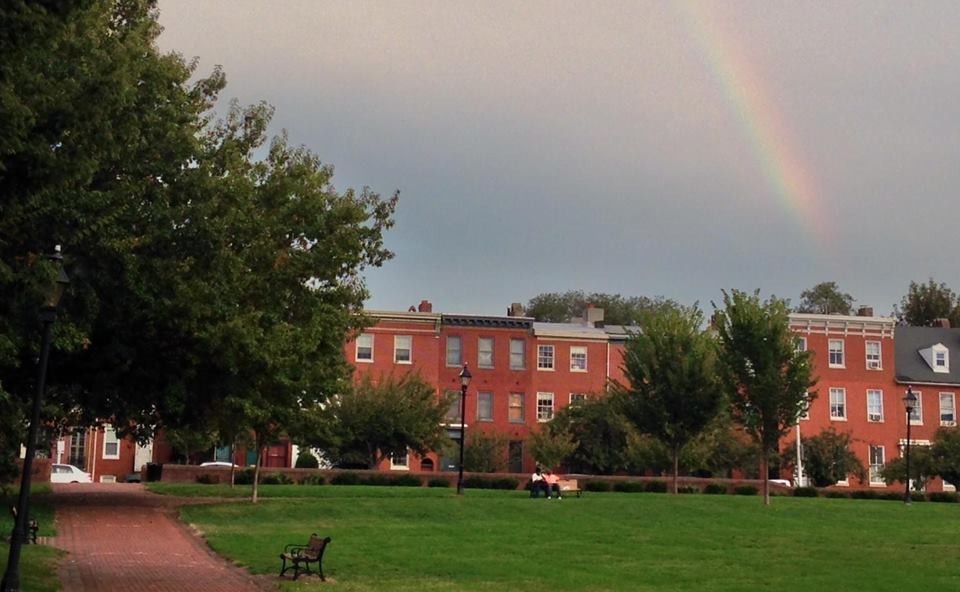
Learn more about 404 George Street and the auction process from the Ashland Auction Group. For questions or more information, contact auctioneer Adam Shpritz by phone at 410-365-3595 (cell) or 410-488-3124 (office) or by email at adam@ashlandauction.com. Bids start at $30,000. Pre-bid offers are accepted by phone at 410-488-3124 or by email to adam@ashlandauction.com.

